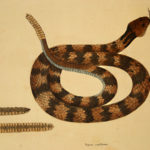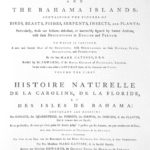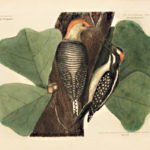To commemorate Mark Catesby’s arrival in the New World 300 years ago, the museum will exhibit prints by this famed naturalist beginning September 21, 2012.
The museum’s selection of Catesby prints has grown significantly, and this exhibit of fifty-two prints features pieces new to the collections since our previous exhibit, Mark Catesby: The Colonial Audubon.
Mark Catesby (1682–1749) exhibited a keen interest in natural history growing up in Suffolk, England. An opportunity to visit his sister in Virginia in 1712 brought the young man into contact with the rich flora and fauna of the New World and the opportunity to travel extensively.
Returning to England in 1719, Catesby acquired patronage and support, and was persuaded to take on a natural history of American that had been started by John Lawson before his death in 1711. Catesby returned to South Carolina in 1722 and for the next three years made notes and drawings and assembled an enormous collection of plants and animals from the Southeast.
When he returned again to England in 1726, Catesby set about assembling and publishing the results of his travels, the first volume being published in 1731. When finished, Catesby’s Natural History of Carolina, Florida, and the Bahama Islands included 220 plates, illustrating 109 birds, 33 amphibians and reptiles, 46 fishes, 31 insects, nine quadrupeds, and 171 plants—“To which are added Observations on the Air, Soil, and Waters: With Remarks upon Agriculture, Grain, Pulse, Roots, &c. To the whole is Perfixed a new and correct Map of the Countries Treated of.”
Catesby’s Natural History is a pioneering work in scientific illustration, and until the time of Audubon a hundred years later, the best illustrative treatment of the flora and fauna of North America. Although his achievements have, to a degree, been obscured by Audubon and other illustrators of the nineteenth century, Catesby has been rightly recognized as the founder of American ornithology and appropriately designated “the Colonial Audubon.”
- Rattlesnake, 1731-43, Mark Catesby, Hand-colored engraving
- Title page from Mark Catesby’s Natural History of Carolina, Florida and the Bahama Islands
- Red-bellied woodpecker, 1731-43, Mark Catesby, Hand-colored engraving



